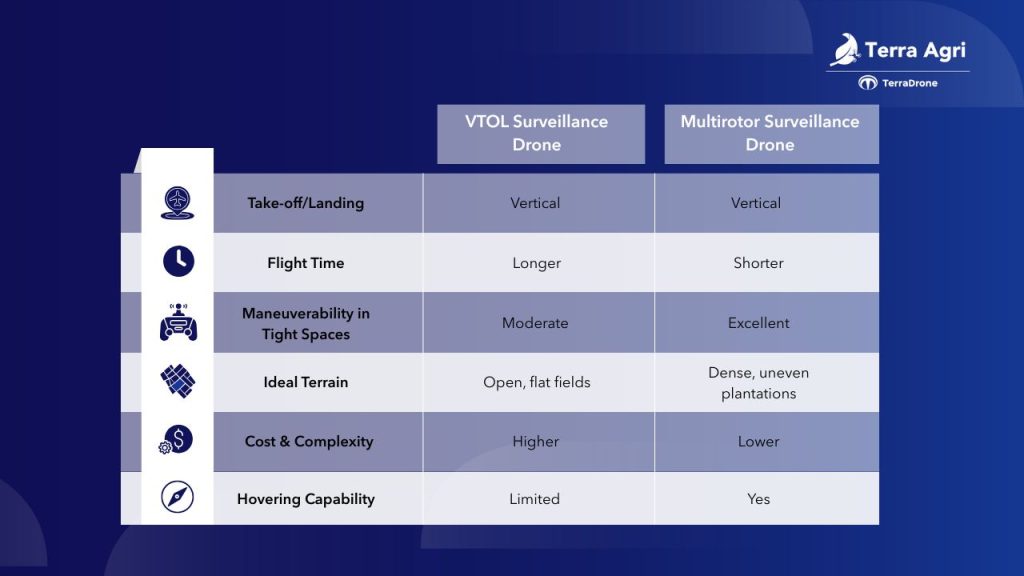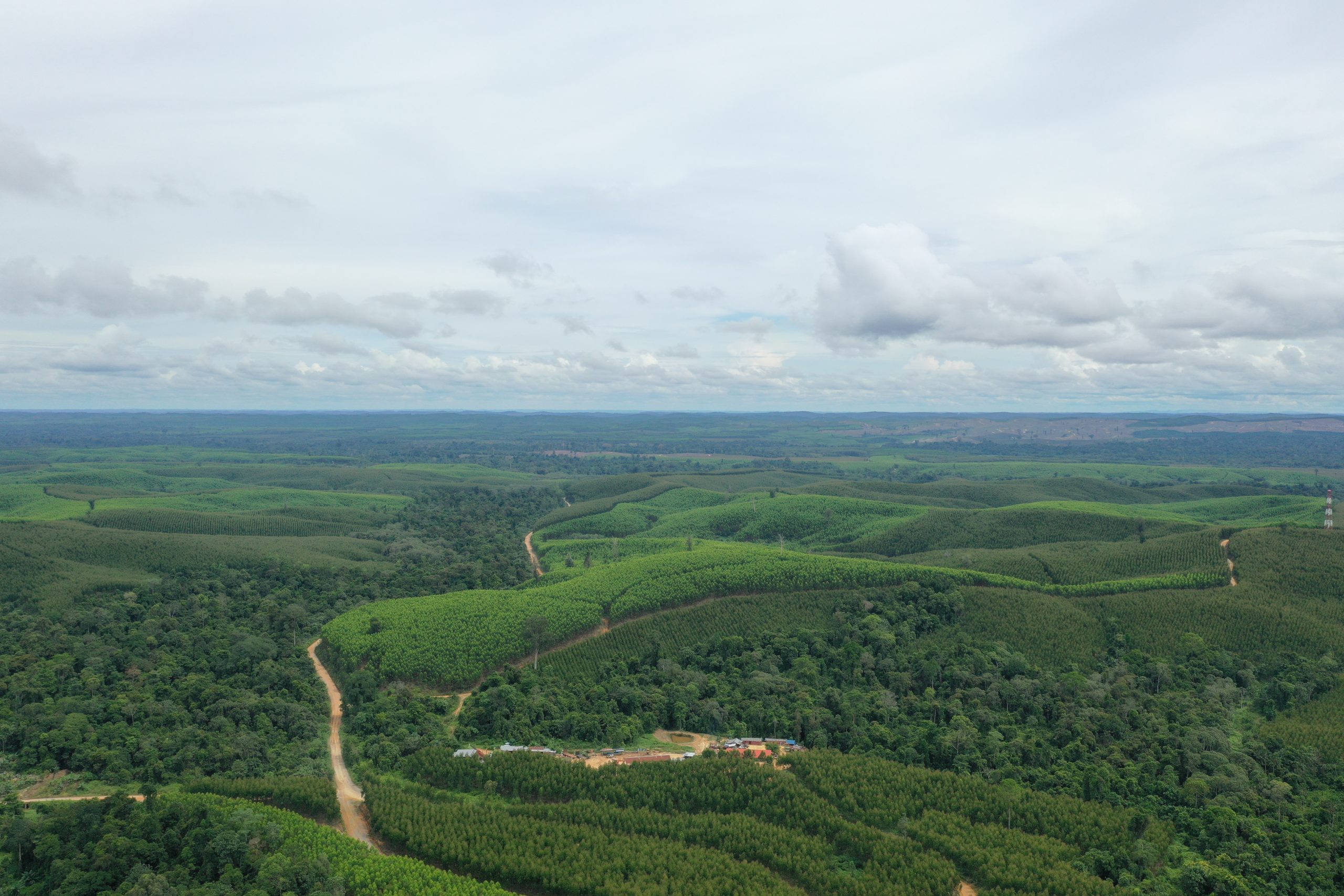As precision agriculture grows, more agribusinesses are turning to aerial technology to monitor and secure their plantations. Among the many options available, the VTOL surveillance drone is often highlighted for its hybrid capabilities—offering both vertical takeoff and long-range flight. But is it the right fit for your plantation?
To answer that, let’s explore what a VTOL surveillance drone is, how it compares with multirotor drones, and why multirotors remain the preferred choice for agricultural surveillance—especially in Southeast Asia’s unique plantation environments.
What Is a VTOL Surveillance Drone?
A VTOL (Vertical Take-Off and Landing) surveillance drone is a hybrid aerial system that merges the vertical lift-off abilities of a helicopter with the efficient cruising flight of a fixed-wing aircraft. This combination delivers two major advantages:
1. Runway-free operations: VTOL drones can take off and land in tight spaces, similar to multirotors.
2. Extended range and flight time: The fixed-wing component enables longer endurance compared to typical multirotor drones.
Because of these features, VTOL drones are widely used for long-distance patrols in sectors like military surveillance, border monitoring, and large-scale infrastructure inspection.
The Reality of Agricultural Monitoring
While VTOL technology seems like a smart fit for agriculture, the realities on the ground often say otherwise. Plantation environments differ significantly from the flat, obstacle-free zones VTOL drones are designed for.
Challenges in Southeast Asian plantations include:
– Dense tree canopies that obstruct GPS signals.
– Limited open areas for safe landing or takeoff.
– High risk of collisions during descent or ascent in narrow paths.
These conditions limit the practical advantages of VTOL drones in many agricultural settings.
Why Multirotor Drones Are Often More Suitable

Multirotor drones, with their ability to hover and maneuver vertically, are especially well-suited for the complex terrain of plantations. They are easier to operate in confined spaces and can perform detailed surveillance tasks at lower altitudes.
Advantages of Multirotor Drones for Plantation Use
1. Precision flying: Perfect for navigating between tree blocks and conducting low-altitude scans.
2. Flexible deployment: Launch from tight clearings, trails, or even pickup trucks.
3. Cost-effective: Lower upfront investment and simpler maintenance routines.
Each type of drone brings its own strengths. However, for the typical needs of plantations—such as detailed monitoring, theft prevention, and crop health analysis—multirotors often offer greater value and ease of use.
Terra Agri’s Surveillance Drone and Service
The periphery of the estate is often one of the most vulnerable areas in a plantation. Outsiders can enter unnoticed, and because these borders are usually located in remote and hard-to-access zones, consistent monitoring becomes a major challenge.
To ensure security, continuous patrolling is necessary—but doing this manually is time-consuming and labor-intensive. That’s where drones come in as a game-changer. By automating perimeter surveillance, drones make monitoring more efficient, reduce manual effort, and provide real-time insights into potential threats.
At Terra Agri, we deploy multirotor surveillance drones, including the TS-M120, built specifically to handle challenging plantation environments with precision and flexibility. These drones can operate from tight spaces, hover for extended periods, and carry various sensors suitable for surveillance tasks—making them ideal for ongoing perimeter monitoring.
What Drone Buyers Often Overlook
When choosing a drone, many buyers focus on specs and trends rather than operational fit. Here are common oversights:
1. Bigger drone ≠ better results: Without proper flight planning and data analysis, even the most advanced drone is ineffective
2. More complex = more risk: VTOL drones are harder to operate and costlier to repair
3. Hardware alone isn’t enough: The right drone must be paired with services, training, and post-flight data support
Choose the Right Drone for the Right Job
The best surveillance drone is not the one with the highest specs, but the one that fits your plantation’s terrain, daily operations, and long-term goals.
For most plantation owners in Southeast Asia, multirotor drones remain the most practical, cost-effective, and efficient solution—especially when paired with professional surveillance services like those offered by Terra Agri.

